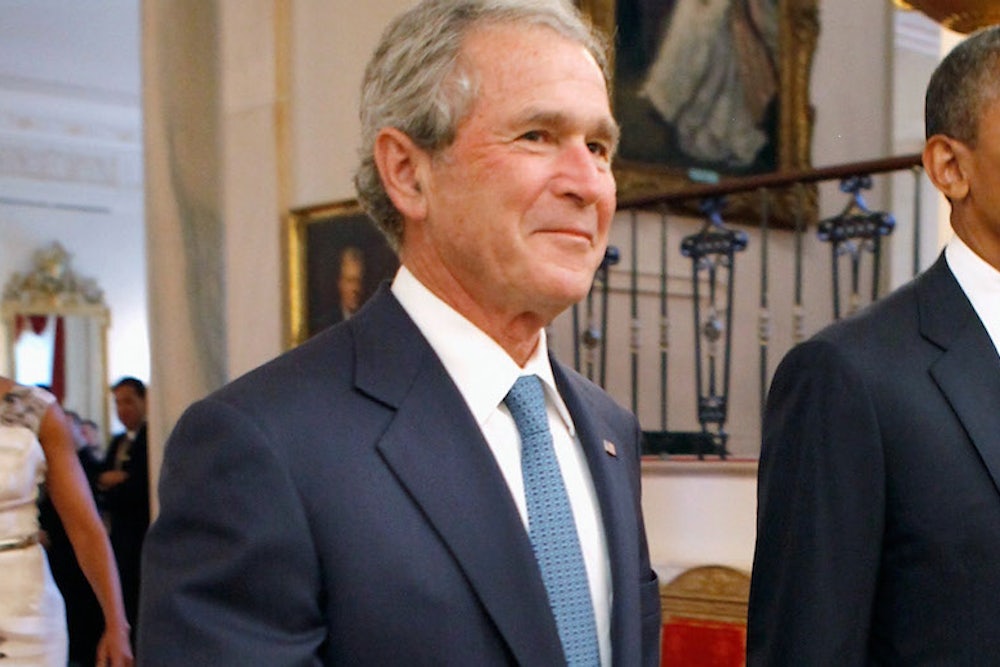I was surprised by my first reaction to George W. Bush in person. Having spent thousands of hours filming Barack Obama in diners, state fairs, and high-school gymnasia, I thought I’d gained some special insight into the character of presidents. But there I was, like any ordinary person watching a White House ceremony on television, thinking, “Oh wow, look at how gray he’s gotten!”
It was 2008, and I was in the Oval Office as President-elect Obama’s official photographer, which was my position during the presidential transition. President Bush was giving Obama a tour of his soon-to-be home.
I usually worked as a videographer, but the Bush people only wanted a still photographer. They were skeptical when my name had been submitted for security clearance. “Why are you sending your YouTube guy as a photographer?” Though I’d worn the “YouTube guy” label proudly as Obama’s New Media Road Director and personal videographer during the campaign, the Bush people used the term interchangeably with “national security threat.”
After my naïve initial shock over Bush’s hair color, I began to wonder about their skepticism of the “YouTube guy.” Candidate Obama might’ve been the first to have his campaign videotaped 24/7, but George W. Bush clearly shared Obama’s amazing ability—which I’d hung my entire video strategy on—to be the same person on and off camera.
As I sprinted up the stairs to the White House behind Bush’s photographer, Eric Draper, dodging the kitty litter in the back stairs, we arrived at the rooms where the First Family actually lives. The president was showing the president-elect a few of his favorite things. “See this room?” he said, sounding astonishingly like Will Ferrell doing his best “W” impression. “This is a good room for sittin’, Barack. I like to do a lot of sittin’ right here.”
Americans detest inauthenticity above all things, especially in our politicians. Our electoral history is littered with losing candidates the nation deemed “inauthentic”–John Kerry and Mitt Romney being just two of the latest.
Even though the 43rd president’s approval rating was hovering at 22 percent at the time, I think most of us would’ve approved of how frankly and familiarly the departing President spoke about his end-of-term woes. “People are pissed, you know?” I remember him saying.
Every Presidential transition is a passing of the baton from someone who has been crushed by the grim reality of governance to someone who still believes in its seemingly limitless potential. That the presidency is taxing, grueling, and aging is cliché, but I think one of the most underappreciated parts—and tricky to observe in the veritable flipbook of pool photos of the graying President—is the vast emotional intelligence required to shift between different frequencies for different events, day out and day in, as the schedule veers wildly from a press conference to a major national disaster to a state dinner. When, after the transition, I joined the White House photo department as the official videographer, I grew accustomed to capturing all the dramatic transitions of a president’s day. One minute, I’d be filming a tearful embrace between POTUS and a shooting victim’s family member in the oval office; the next I’d be helping Samantha Tubman, deputy Social Secretary, pep up a drooping sports team unused to standing for hours in suits. When my footage of the Obama Presidency becomes public by law, as all film and photos of the president do, I believe people will be surprised by the sheer volume of these shifts in the president’s schedule.
Our leaders need to keep up an authentic core. This is not something Lee Strasberg can teach you. Our very best actors, to say nothing of politicians, would be unable to sustain that much false emotion. Americans seem to, again and again, send individuals to the White House who are capable of projecting authentic personalities.
This encounter, five years ago this month, has forced me to re-evaluate the way I’ve judged past presidents. I now think I was too harsh with the last administration. Though I disagree with both the general thrust and specifics of almost the entire W. catalog, and I’m unsympathetic to most of the means they used to accomplish their so-called missions, I regret some of the unkind thoughts I had about President Bush’s priorities and use of time. Maybe if I’d seen more candid video of him, I might’ve perceived him differently.
In 2016, when President Obama visits with the new president-elect, there will be a videographer by his side capturing the moment for history. And I’ve no doubt that a highlight of the video will be a noticeably grayer Barack Obama pointing out a particular spot in the Residence: “Oh, you know, George W. Bush used to do a lot of sitting right there.”
Arun Chaudhary was the first Official White House Videographer and is the author of First Cameraman, Documenting the Obama Presidency in Real Time.
Correction: The article originally misspelled the last name of Lee Strasberg.
